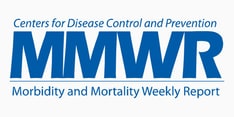TOPLINE:
A large cohort study found no increased risk for major congenital malformations (MCMs) among infants with prenatal exposure to nicotine replacement therapy (NRT), varenicline, or bupropion within 90 days before conception or during the first trimester.
METHODOLOGY:
- Researchers conducted a retrospective cohort study across four regions — New South Wales, New Zealand, Norway, and Sweden — to analyze the risk for MCMs following prenatal exposure to smoking cessation pharmacotherapies.
- Data were sourced from birth records to identify births among women who smoked during the first trimester or received smoking cessation therapies within 90 days before conception or during the first trimester.
- Overall, 135,284 woman-infant pairs were propensity-matched, comparing infants prenatally exposed to therapy (NRT, varenicline, or bupropion) with those born to mothers who smoked but were unexposed to therapy.
- Primary outcomes were the risk for MCMs overall and by subgroups, including defects of the heart, limbs, orofacial clefts, genital organs, kidney and urinary tract, digestive system, respiratory system, nervous system, abdominal wall, eye, and ear.
TAKEAWAY:
- No significant differences in overall MCM risk were observed between infants exposed to NRT (adjusted relative risk [aRR], 1.10; 95% CI, 0.98-1.22), varenicline (aRR, 0.90; 95% CI, 0.73-1.10), or bupropion (aRR, 0.93; 95% CI, 0.67-1.29) and those unexposed to therapy.
- NRT exposure was not associated with an increased risk for MCMs affecting the heart, limbs, genital organs, kidney/urinary tract, respiratory system, or orofacial clefts, but risk appeared to be higher for digestive system malformations (aRR, 1.53; 95% CI, 1.05-2.23); however, the P value changed from .03 to .41 following adjustment for multiple comparisons.
- A higher prevalence of kidney and urinary tract MCMs was observed with varenicline (aRR, 2.75; 95% CI, 1.42-5.34); however, the P value changed from < .01 to .09 following multiple corrections.
- The prevalence of cardiac MCMs appeared to be lower among infants exposed to bupropion than among those unexposed to therapy (6.7 vs 11.6 per 1000 live births), though this finding involved a small number of exposed infants.
IN PRACTICE:
“The results of this cohort study suggest that neither NRT, varenicline, nor bupropion use during the first trimester was associated with an increased risk of MCMs overall compared with smoking,” the authors wrote. “Our findings are reassuring given the extensive detrimental effects of smoking on maternal and child health,” they added.
SOURCE:
The study was led by Duong T. Tran, PhD, National Drug and Alcohol Research Centre, Faculty of Medicine and Health, University of New South Wales, Sydney, Australia. It was published online on March 31, 2025, in JAMA Internal Medicine.
LIMITATIONS:
The study did not examine long-term functional defects or adverse neurodevelopmental outcomes. Some infants born to women without recorded prescriptions for smoking cessation therapy may have been exposed to over-the-counter NRT, which was not accounted for here. Additionally, the analyses excluded stillborn infants and lacked data on pregnancy terminations.
DISCLOSURES:
The study received funding from the National Health and Medical Research Council Ideas Grant, University of New South Wales Research Infrastructure Grant, University of New South Wales Scientia Program Award, and others. Several authors reported receiving funding from these organizations, with some also reporting financial ties with certain pharmaceutical companies.
This article was created using several editorial tools, including AI, as part of the process. Human editors reviewed this content before publication.


